Pinguecula Monster
Courtesy of Dr. Sheila Morrison, OD, Mission Eye Care
INDICATIONS
Bilateral keratoconus.
Never worn contact lenses.
OD: 20/300
OS: 20/40
Needs urgent CCXL OS, required viable vision OD first.
Never worn contact lenses.
OD: 20/300
OS: 20/40
Needs urgent CCXL OS, required viable vision OD first.
HISTORY
| This patient presented for a scleral lens fitting with a history of bilateral keratoconus.
Patients BCVA with spectacles is |
OD: 20/300 OS: 20/40 |
Prior to crosslinking OS patient urgently needed viable vision OD and was referred by the OMD for a contact lens fit. The fit was complicated by a large nasal pinguecula (Figure 1), and we decided to opt for the profilometry-based Gaudi freeform lens fit.
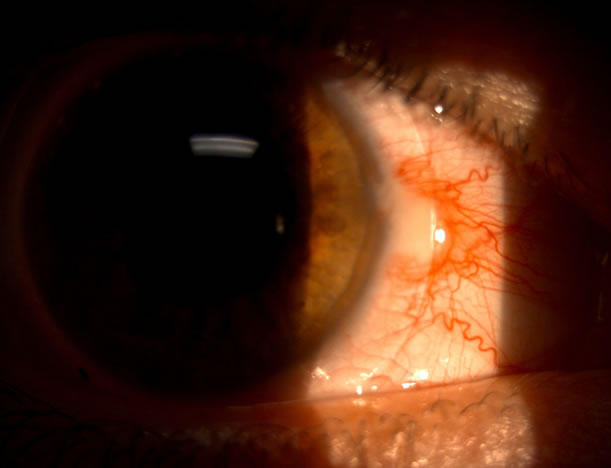
Figure 1.
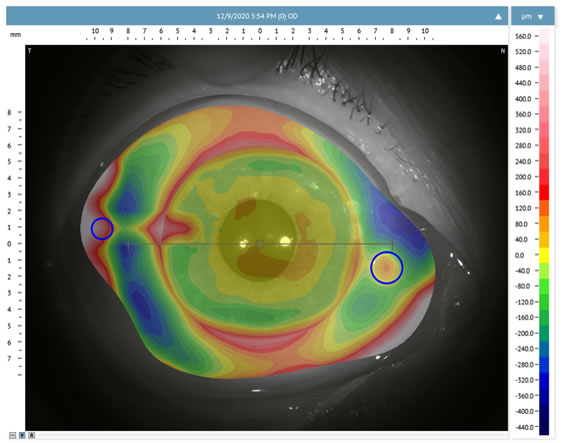
Figure 2.
Lens selection and design:
The patient was fitted with a GaudiTM scleral lens. We selected a 16.9-mm diameter lens with a high fit factor to accurately match the contours of the lens to the shape of the eye and the pinguecula. Variable settling depths were used in the design to avoid compressing the pinguecula.
Figure 2 (top) shows the radial sagittal profile (red line) compared to the ESP measurement (black line) at the 7.74-mm radius and (bottom) the lens profile at the pinguecula at the 0-degree meridian.
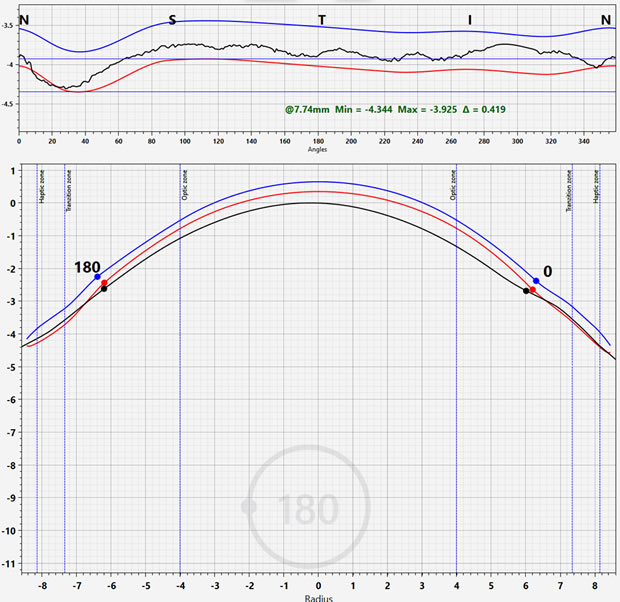
Figure 3.
Outcome:
First lens (Figure 4):
- VA 20/25
- Comfortable
- 250-µm central clearance and full limbal clearance
- Minor debris and lens movement
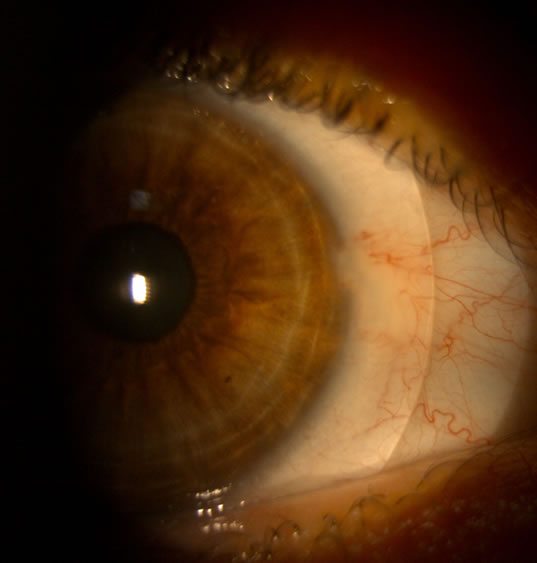
Figure 4.
Second lens (Figure 5):
- VA 20/25
- Comfortable
- Stable
- Happy patient
- Healthy eyes
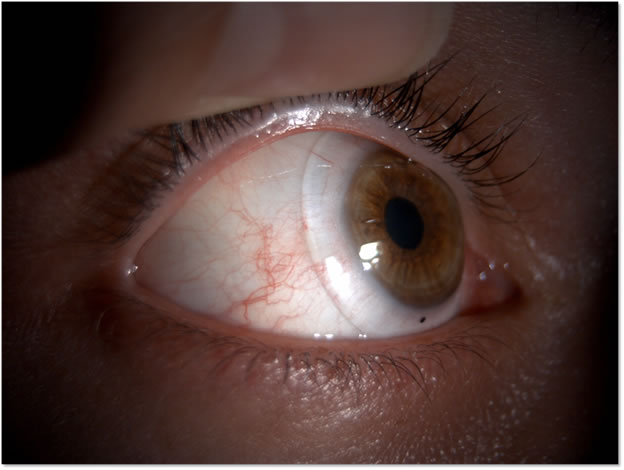
Figure 5.
Summary:
The patient achieved improved comfort and viable VA OD, which allows him to perform crosslinking OS.
The fitting process was significantly simplified with the use of the Eaglet Eye ESP profilometry measurements and Gaudi Scleral lens design software. Excellent comfort and VA were achieved with the first lens with minor lens motion and debris. Adjusting the landing in the second lens improved stability without sacrificing VA and comfort.
